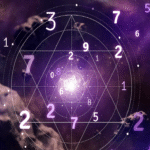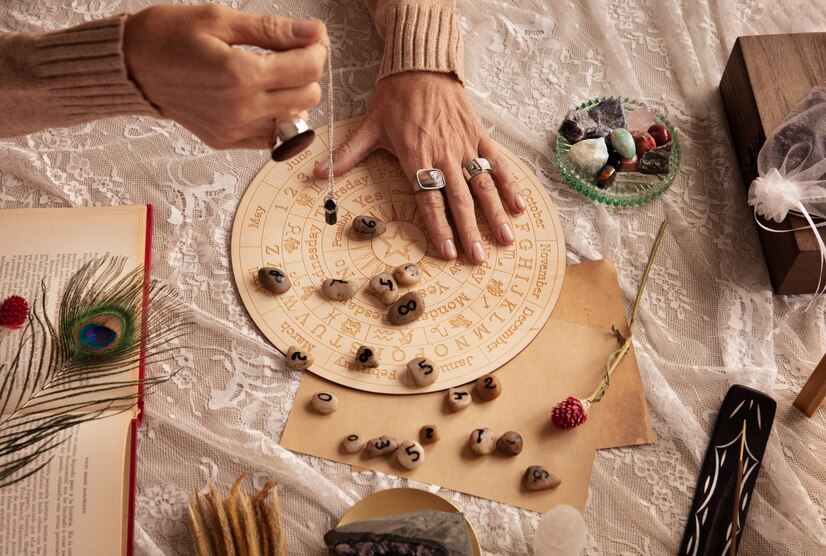Introduction: The Celestial Foundations
Namaste and welcome to our council session on the Bhavas – the Houses in Jyotish (Vedic Astrology). While the Grahas (Planets) show what energies are active and the Rashis (Signs) show how they manifest, the Bhavas reveal where in life these energies play out. Understanding the Astrology Houses Explained from a Vedic perspective is key to mapping the Areas of Life Astrology according to karmic indications. We will delve into the 12 Houses Meaning (Dwadasha Bhavas) and the principles of Chart Division unique to Jyotish.
The Participants:
- Pandit Varaha: A Traditional Jyotishi, expert in classical Bhava significations and Karakas.
- Vidushi Chandra: A Contemporary Jyotishi, relating Bhava meanings to modern life experiences.
- Shishya Kiran: A Dedicated Student, learning to navigate Bhava lords and significators.
- Upaya Devi: A Practical Application Expert, using Bhava analysis for targeted remedies and guidance.
- Moderator: Facilitating our exploration of the Bhavas.
Round 1: Understanding Astrology Houses Explained from Multiple Angles (Vedic Perspective)
Moderator: Let’s begin with the classical understanding. Pandit Varaha, what is the essence of the Bhavas in traditional Jyotish?
Pandit Varaha: The Bhavas are the twelve divisions of the sky, starting from the Lagna (Ascendant), representing the fields of human experience and karmic manifestation. Each Bhava has primary significations (e.g., 1st: self, body; 2nd: wealth, family, speech; 4th: mother, home, happiness; 7th: spouse, partnerships; 10th: career, karma) and specific natural significators or Karakas (Grahas naturally associated with the house themes, e.g., Jupiter/Guru for the 2nd, 5th, 9th, 11th; Saturn/Shani for the 8th, 12th). The strength of the Bhava, its lord (Bhavapathi or House Lord), and planets occupying it determine the results pertaining to that Area of Life Astrology. We must also consider house categories like Kendras (1, 4, 7, 10 – pillars), Trikonas (1, 5, 9 – fortune), and Dusthanas (6, 8, 12 – challenges).
Vidushi Chandra: Contemporary Jyotish honors these core meanings but often explains Bhavas as environments or stages where specific psychological and experiential dramas unfold. The 4th Bhava isn’t just mother and property; it’s our inner emotional foundation, our sense of security. The 5th isn’t just children and speculation; it’s creativity, self-expression, and intelligence. We explore the 12 Houses Meaning as arenas for karmic lessons and personal growth, linking them to modern life contexts like education (4th/5th/9th), career complexities (10th/6th/11th), and psychological well-being (influenced by many houses, esp. 1st, 4th, Moon’s house).
Shishya Kiran: This framework is logical, but tracing the connections is complex! Identifying the Bhavapathi (House Lord) for each house and then finding its placement and condition seems crucial but challenging initially. For example, understanding how the lord of the 7th house (partnerships) being placed in the 12th house (loss/spirituality) impacts relationships requires careful synthesis. Learning the Karakas for each Bhava adds another layer. Getting the Bhavas Explained clearly is vital.
Upaya Devi: Precisely, Kiran. In practical application, Bhava analysis is paramount for diagnosis and guidance. If a client faces career issues, we analyze the 10th Bhava, its lord (10th Bhavapathi), planets within it, the Karaka for career (Surya, Budha, Shani, Guru depending on context), and relevant divisional charts (like Dasamsa D10). Afflictions to specific Bhavas or their lords pinpoint areas needing attention or Upayas (remedies). Is the 2nd Bhava (wealth) afflicted? Is the 7th Bhava (marriage) strong? This Chart Division into Astrological Domains directs the entire consultation.
Pandit Varaha: Indeed. The interplay between the Bhava, the Bhavapathi, and the Karaka is key. A strong Bhava with a weak lord gives mixed results. A weak Bhava with a strong lord shows potential that needs activation. Karakas indicate the natural potential for that area. This triplicity is fundamental. We also use systems like Bhava Chalit to sometimes adjust planetary house positions based on exact degrees, refining the interpretation.
Vidushi Chandra: And understanding the nature of the houses (Kendra, Trikona, Dusthana, Upachaya – 3, 6, 10, 11 improving over time) helps interpret how planets function within them. A malefic planet like Saturn might function better in an Upachaya house long-term, while benefics generally thrive in Kendras and Trikonas.
Perspective Intersection: The traditional foundation of significations, lords, and Karakas (Varaha) provides the structure, which contemporary views enrich with psychological context (Chandra), requiring students to master the lord-placement analysis (Kiran), enabling practitioners to pinpoint life issues and suggest remedies (Upaya Devi).
Round 2: Common Misconceptions vs. Reality (Vedic Context)
Moderator: Let’s address common misunderstandings about Bhavas. Vidushi Chandra?
Vidushi Chandra: A common one is thinking Dusthana houses (6th, 8th, 12th) are purely ‘bad’. While they represent challenges (enemies/debt/health – 6th; death/obstacles/secrets – 8th; loss/expenditure/liberation – 12th), they are also houses of service, transformation, and spiritual growth. Planets here, especially malefics, can indicate profound capacity for healing, research, or selfless service, depending on the overall chart. They are difficult, not necessarily evil.
Upaya Devi: Another misconception relates to Upayas. People sometimes think performing a remedy for a planet will magically fix all issues related to the houses it rules or occupies. Remedies aim to propitiate or strengthen planetary energies, potentially mitigating challenges in related Bhavas, but they work alongside karma and conscious effort. Understanding the specific Bhava affliction helps target the Upaya more effectively. Getting the Astrology Houses Explained properly avoids generic solutions.
Pandit Varaha: From a traditional perspective, a misconception is underestimating the strength derived from house type. Planets in Kendras gain directional strength (Dig Bala, e.g., Jupiter/Mercury in 1st, Sun/Mars in 10th). Lords of Kendras and Trikonas associating form powerful Raja Yogas (yogas of power and status). Ignoring these structural dignities misses key predictive insights into the 12 Houses Meaning.
Shishya Kiran: I initially thought an empty Bhava meant nothing happens in that area of life! I learned that the Bhavapathi (House Lord) carries the primary responsibility for an empty house. Its strength and placement become even more critical to understand how that Area of Life Astrology will function.
Hidden Wisdom: Maraka Bhavas: The 2nd and 7th Bhavas are known as ‘Maraka’ (killer) houses. While not literally predicting death in most contexts, their lords (Marakesh) gain significance during specific Dasha periods for indicating potential health challenges or endings related to their significations. This adds a layer of complex timing to Bhava analysis.
Round 3: Historical Evolution & Future Directions (Vedic Context)
Moderator: How has the Bhava concept developed? Pandit Varaha?
Pandit Varaha: The concept of dividing the chart into twelve Bhavas representing life domains is ancient, found in the earliest comprehensive Jyotish texts like Brihat Parashara Hora Shastra. Core significations, Karakas, and the importance of Bhavapathis were established early. Various methods of calculating house cusps (like Sripati) evolved alongside the dominant use of Equal House from the Lagna degree or Whole Sign (treating each Rashi as a house).
Vidushi Chandra: While the core meanings are timeless, contemporary Jyotish explores how these Bhavas manifest in modern society. The 11th Bhava isn’t just ‘gains’ but also networks, aspirations, and societal contributions. The 3rd Bhava extends beyond siblings to communication technologies and media. Interpretations adapt to reflect current Areas of Life Astrology. There’s also ongoing discussion and research comparing the efficacy of different house systems (e.g., Placidus sometimes used by modernists vs. traditional Equal House/Sripati/Bhava Chalit).
Upaya Devi: Practical applications see refinement. While traditional Bhava analysis focused heavily on status, wealth, marriage, and longevity, modern consultations use it extensively for psychological well-being, career counseling specific to modern industries, and navigating complex relationship dynamics, all viewed through the lens of the Bhavas Explained framework. The use of Varga charts (divisional charts) to dissect Bhava indications is perhaps more widespread now due to software.
Shishya Kiran: For students, the accessibility of information on Bhava lords, Karakas, and house categories online is helpful. However, the debate around house systems can be confusing. Clearer resources explaining the rationale and application of different Chart Division methods within the Vedic context would be valuable. Future tools might better integrate Bhava analysis across multiple Varga charts.
Critical Considerations: Applying Bhava significations too rigidly without considering the Rashi, Grahas involved, aspects, and the overall chart context leads to inaccurate readings. The 12 Houses Meaning is always contextual. Also, relying solely on one house system without understanding its principles can be limiting.
Closing Reflections: Integrating Wisdom for Today’s Seeker
Moderator: How can our audience best integrate these perspectives on the Bhavas?
Upaya Devi: Map your life onto the 12 Bhavas. Identify which houses contain planets (Grahas) – these are active arenas. For empty houses, find the Bhavapathi (lord) – its condition reveals how that area functions. Use this map to understand where your energies naturally flow and where potential challenges or strengths lie, guiding practical action and potential Upayas.
Shishya Kiran: Start by learning the primary signification and Karaka for each of the 12 Bhavas. Practice identifying the lord of each house in your own Kundali. Don’t worry about complex techniques initially; build a solid foundation on the basics of the Bhavas Explained.
Vidushi Chandra: Reflect on the Bhavas as psychological environments. How do you feel and experience the domains of the 4th house (home/security) versus the 10th house (public life/status)? Use this awareness derived from the 12 Houses Meaning to understand your motivations and reactions in different life contexts.
Pandit Varaha: Respect the Bhavas as the divinely ordained stage for karma. Understand the power dynamics related to Kendras, Trikonas, and Dusthanas. Always analyze the Bhava, its lord (Bhavapathi), and its Karaka together for a complete picture of any Area of Life Astrology. Honour the traditional wisdom embedded in the Bhava framework.
Moderator: Thank you, council. The Bhavas provide the essential structure within which the cosmic play unfolds in our individual lives. By understanding their traditional significations, contemporary relevance, learning requirements, and practical applications, we gain a powerful tool for navigating our karmic path and understanding the diverse arenas of human experience mapped out in our Janma Kundali.
Further Learning
- Lagna (Ascendant) and Lagnesha Explained
- Introduction to Grahas (Planets) in Vedic Astrology
- Understanding Planetary Strength and Dignity in Jyotish
- Introduction to Yogas (Planetary Combinations)
- House Systems in Vedic Astrology (Comparison)









